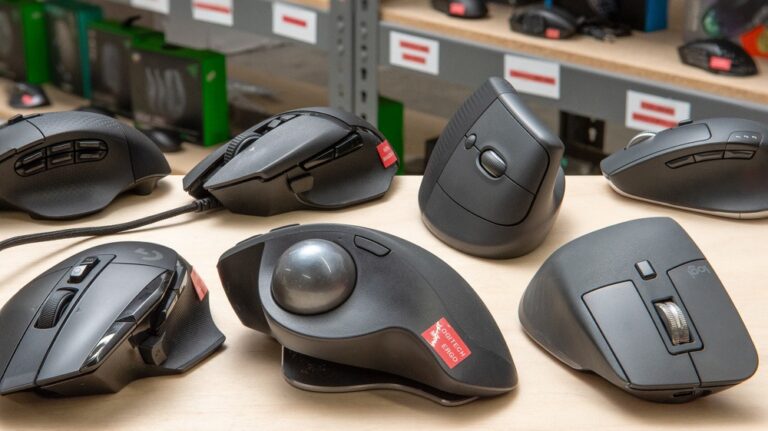In the last few decades, technology has grown by leaps and bounds. Organizations of all sizes and industries have leveraged various IT solutions to help drive growth, profits, and productivity.
One key innovation that many companies rely on is IoT devices. According to research cited in a PR Newswire release, “the Global Internet of Things Market (IoT Market) Size was valued at UDS 212.1 Billion in 2018.”
What are IoT devices? How do they help businesses? What should you know about these devices?
What Are IoT Devices?
IoT is an acronym for “Internet of Things,” and IoT devices are internet-connected devices that are able to communicate with other devices and networks.
These devices can be capable of a wide variety of tasks, depending on their form and function. Many IoT devices leverage their internet connectivity to allow users to access and operate the devices remotely, access remote databases to fetch information (which can be used to allow the device to reply to a query, assemble an object based on a CAD file stored elsewhere, or to automate some routine task), or accept firmware updates from the manufacturer.
Common IoT Devices List
There are many types of IoT devices on the market. Here’s a short IoT devices list that covers a few broad categories:
- “Smart” Home Devices. These are consumer-focused devices that are designed to help automate household functions and can include things like smart speakers (Amazon Echo, Google Home, etc.), fridges, Wi-Fi enabled lights, and electronic locks (among many other devices). According to Statista, the “smart home” device market was projected to reach $23.328 billion in 2020—making it a major contributor to the overall IoT device market.
- Industrial Sensors. Manufacturers may use internet-connected sensor equipment to collect data about their other factory devices and to monitor assembly lines for potential problems. IoT sensors can help improve operational visibility, maintenance scheduling, and logistics by monitoring equipment and the consumption rate for specific resources.
- Smart Automobiles. Cars and trucks of all sizes are starting to see more and more IoT functionality as part of an ongoing effort to create self-driving vehicles. According to International Business Times, “The investment into the autonomous vehicle industry has reached over $100 billion” as automotive manufacturers race to be the first company to release a self-driving car.
- Smart Cameras. Both private homeowners and businesses are starting to invest more and more into internet-connected cameras that can be controlled remotely and store their recordings in safe and secure off-site locations. Some IoT smart cameras can leverage software that aids in recognizing intruders and weapons and sending alerts if one is detected.
- Manufacturing Robots. Assembly lines are seeing an increasing amount of internet-connected automation. Manufacturing robots with IoT capabilities can be remotely controlled and programmed, allowing manufacturers to remotely control their assembly lines and change production queues whenever they want.
- Healthcare/Fitness Devices. From smart watches that monitor heart rates to hospital devices, IoT technology has helped to revolutionize healthcare and fitness by making it easier to collect vital health information. The data collected can be used help people track progress towards their health and fitness goals or to generate alerts for healthcare providers in an emergency.
This list is far from comprehensive—new IoT devices are being created all the time and new uses are being found for internet-connected appliances and equipment.
Major Concerns Regarding IoT Devices
As useful as IoT devices are, there are some major concerns regarding IoT devices. The biggest concern about IoT devices in most businesses is typically their security. Other concerns include connectivity bottlenecks, government regulation, and getting buy-in within the organization for adopting new IoT devices.

About IoT Device Security Concerns
There are a number of problems with securing IoT devices, including:
- How They Expand a Network’s Attack Surface: In cybersecurity, maintaining the smallest possible attack surface (meaning you have few exposed points that cybercriminals can target) is important for avoiding security breaches. Unsecured IoT devices that have wireless connectivity increase the size of a company’s attack surface—making it easier for hackers to find a way onto the network. In the past, hackers have leveraged IoT devices to create botnets for DDoS attacks.
- Software Vulnerabilities on IoT Devices: Different IoT devices will have different firmware, operating systems, and security systems. The problem is that the security for different IoT devices can be incredibly uneven—with some devices having glaring vulnerabilities that make them easy for cybercriminals to target. For example, many IoT devices use open source software that can be leveraged to gain access to and manipulate these devices.
- Degraded Network Visibility: It may sound odd for IoT devices—items that specifically work by collecting data and being connected—but it is possible for the overuse of these devices to make it harder to keep track of all the IT assets on a network. This, in turn, increases the risk of security vulnerabilities as some IoT devices “fall through the cracks” and don’t get accounted for in IT change management, security patching, or cybersecurity audit processes.
So, many business owners and IT managers wonder about how to secure IoT devices on their networks. There are a few things that can be done to help make IoT more secure, including:
- Having a Set IT Change Management Strategy: Organizations of all sizes and industries need a consistent IT change management strategy for adding new resources to their network—especially Wi-Fi devices that can communicate wirelessly. Keeping logs of new devices added, having a set IT asset disposition process, and ensuring that IoT devices are included in regular patch management schedules can help keep changes more manageable.
- If Possible, Disable Features to Automatically Connect to New Networks: Some IoT devices, in an effort to make initial setup easier and avoid a loss of connectivity, have the ability to automatically detect and connect with new wireless networks. Whenever possible, such features should be disabled. This helps reduce the risk of an attacker being able to connect with IoT devices wirelessly for Man-in-the-Middle (MitM) attacks.
- Consider Setting up a Separate Network for Non-Critical IoT Devices: Does the smart coffee maker and fridge in the office break room need to be on the same network as the database with vital company secrets and every employee’s work computer? Probably not. Consider setting up a secondary wireless network access point or profile for IoT devices that aren’t critical for business operations. This way, they can still access the internet for their “smart” features, but won’t immediately become a backdoor into the company’s more sensitive assets.
- Keep IoT Device Firmware Updated: IoT device manufacturers may create firmware/software updates for their devices that help close known security vulnerabilities (or add new functions). Keeping the latest security patches applied can mean the difference between protecting data and suffering a major security breach.
Edge Network Computing and IoT Devices

While security is a major concern for IoT devices, what about the connectivity bottlenecks mentioned earlier? IoT devices can consume a surprisingly large amount of network bandwidth as they ping a server for information requests. In fact, projections from the International Data Corporation (IDC) state that “there will be 41.6 billion connected IoT devices, or ‘things,’ generating 79.4 zettabytes (ZB) of data in 2025.”
To put this in perspective, a zettabyte is equal to one trillion (1,000,000,000,000) Gigabytes (GB). If you divide 79.4 trillion GB of data by 41.6 billion IoT devices, that means each device will generate an average of 1,908.65 GB of data each year. Spreading that out over the course of a year means that the actual impact of any single device at any given moment is likely to be minimal. However, when multiple IoT devices are in “high consumption” mode at once, that can create data bandwidth bottlenecks that congest the network.
One way to address the problem of high bandwidth consumption by IoT devices is to spread the load out. Instead of relying on a single, central data center that might be overwhelmed if dozens (or hundreds) of IoT devices ping it for information all at once, companies can use colocation data centers at the edges of a distributed network to handle IoT device data requests.
By placing extra data centers closer to where the IoT devices are located, organizations can minimize lag between when these devices send a request and when they get a response. This can help prevent delays in workflows relying on IoT devices.
Additionally, by having extra edge data centers available, organizations can build some IT resiliency and systems redundancy. This way, if one data center fails (because of a power outage, network infrastructure failure, cyberattack, or natural disaster), traffic and requests headed for that data center can be rerouted to other data centers. This eliminates some single points of failure and increases overall network reliability.
One common objection to using outsourced data centers on the edge of the network is that some data center service providers don’t supply their customers with enough control or visibility into the data production environment. This leaves companies in the dark about their actual bandwidth or power requirements—until they start racking up overage fees when their needs outpace what was originally provisioned.
FAQ
1. Can IoT devices be used in agriculture?
Yes, IoT devices are increasingly being used in agriculture for precision farming, soil moisture monitoring, livestock tracking, and more, helping farmers increase yield and reduce resource usage.
2. How do IoT devices impact energy consumption?
Many IoT devices are designed to be energy-efficient. However, the sheer number of devices can lead to increased energy consumption. On the positive side, IoT devices can be used for energy management, optimizing usage, and reducing costs.
3. Are there privacy concerns with IoT devices?
Yes, since IoT devices collect vast amounts of data, there are concerns about how this data is used, stored, and shared. It’s crucial for users to be aware of the data policies of their devices and for manufacturers to prioritize user privacy.
4. How do IoT devices communicate with each other?
IoT devices communicate using protocols like MQTT, CoAP, and HTTP. They can connect directly or through IoT platforms that facilitate data exchange and integration.
5. Can IoT devices function without the internet?
While the primary feature of IoT devices is internet connectivity, some can operate in a limited capacity without the internet, storing data locally and syncing when a connection is re-established.
Final Words
The world of IoT is vast, dynamic, and ever-evolving. As technology continues to advance, the potential of IoT devices to revolutionize industries and improve our daily lives becomes even more apparent. However, with great potential comes great responsibility. Ensuring the security, privacy, and efficient operation of these devices is paramount. As we embrace the future of IoT, it’s essential to do so with awareness, understanding, and a commitment to best practices.
Related Posts:
- Scissor Lifts - Should You Buy Or Hire Them?
- How Many Devices Can Stream Amazon Prime Video?
- Server Downtime: Common Causes and How to Prevent Them
- 8 Common Visual Regression Testing Challenges and…
- Common Types of Maritime Accidents and How to Avoid Them
- What You Should Know About Data Center Cooling Technologies?








